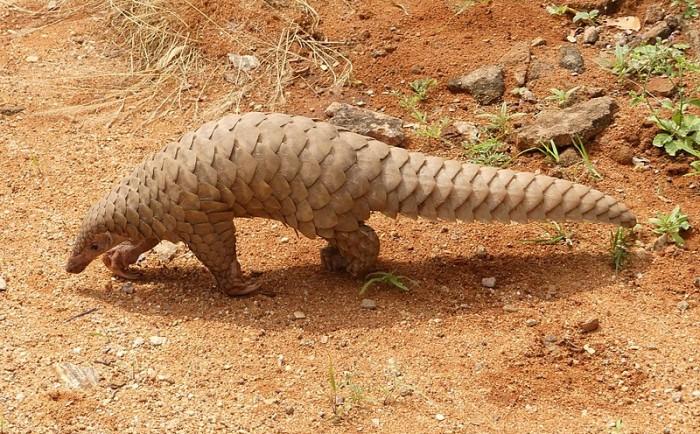An in-depth analysis of fossils from one of the most important paleontological sites in Eastern Europe led to the discovery of a new pangolin species previously thought to have existed in Europe in the early Pleistocene, but has only now been confirmed.

"It's not a fancy fossil," said Claire Terhune, an associate professor of anthropology at the University of Arkansas. "It's just a bone, but it's a new species of strange animal." We are proud of it because the pangolin's fossil record is extremely rare. This happens to be the youngest pangolin found in Europe and the only fossil pangolin in the European Pleistocene. ”
This humerus fossil comes from Graunceanu, a rich fossil mine in Romania's Oltet Valley. For nearly a decade, Terhune and an international team of researchers have focused their attention on other sites in Graunceanu and Oltet. Originally discovered as a result of landslides in the 1960s, these sites produced a wide variety of animal fossils, including large terrestrial monkeys, short-necked giraffes, rhinos, and saber-toothed cats, in addition to new pangolin species.
"It is particularly exciting that although some work in the 1930s suggests the presence of pangolins in Europe during the Pleistocene, these fossils have been lost, and other researchers have expressed doubts about their effectiveness," Terhune said. Now we can be sure that at least 2 million years ago, there were pangolins in Europe. ”
Modern pangolins are found in Asia and Africa. Often referred to as scaly anteaters, they look a bit like armadillos wandering in the southern United States. They are sometimes mistaken for reptiles due to their scales from beginning to end, but modern pangolins are actually mammals and are most closely associated with carnivores. They are also one of the most illegally trafficked animals in the world. According to the World Wildlife Fund, 8 species of live pangolins on both continents range from "vulnerable" to "critically endangered.".
The new pangolin fossil is between 1.9 million and 2.2 million years old, placing it within the range of the Pleistocene epoch, which ranges from about 2.6 million years ago to about 11,700 years ago. The fossil's identification as a pangolin is important because previous studies have shown that pangolins disappeared from European paleontological records during the Miocene, nearly 10 million years ago. Previous work hypothesized that pangolins are pushed into more tropical and subtropical equatorial environments due to global cooling trends.
As the youngest and most well-documented pangolin fossil in Europe and the only fossil from Pleistocene Europe, this new species revises the early understanding of pangolin evolution and biogeography. The new species, known as Smutsia olteniensis, has several unique traits along with other living members of the genus Smutsia, which are currently only found in Africa.